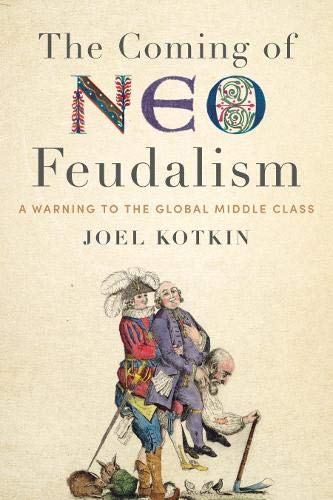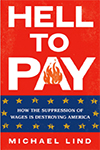
Some day, Donald Trump may lead America into a golden era of reindustrialisation, or perhaps one last hurrah before China’s domination of materials and manufacturing knocks the US off its number one perch. Yet what if we start to build new factories and ports but no one shows up to work in them?
Trump claims to have dragooned some $12tn in new foreign investment, but even he questions whether we have the bodies, and minds, to fill American jobs. He recently defended H-1B visas for migrants with “special” talents (after first questioning them), alarming some of his more nationalist Maga allies.
H-1B visas are typically used by tech firms, but the row over their future illustrates why America is facing a critical shortage of skilled workers across the board. To some extent, both sides of the debate are right.
As the populist Right points out, H1-B visas have a record of abuse – including a notorious case at Disney, which replaced some of its American IT workers with foreign ones and even effectively required the departing US staff to train their replacements. Roughly three-quarters of Silicon Valley’s jobs were in 2018 estimated to be held by non-citizens. Of course, the oligarchs look at these “technocoolies” not so much as a genius input as a way to save money.
But still, as Vivek Ramaswamy has acidly pointed out, foreign workers are needed because of profound failures in the US education system.
Today, US fourth and eighth graders are performing worse not only than students in East Asia, but also those in the likes of Poland and Sweden. Overall, some 40pc of US public school students fail to meet standards in either maths or English, worse than pre-pandemic. The country was hardly doing spectacularly before then. In maths, the OECD’s 2018 Program for International Student Assessment found the United States was outperformed by 36 countries, not only by China, but also Russia, Italy, France, Finland, Poland, and Canada.
This lack of achievement at the grade school level is felt not only in the elite professions but even in more mundane careers such as truck drivers, machine-tool operators, and welders who can do basic industrial tasks. By 2030, the US could be short about two million industrial workers; the American Welding Society estimates the shortage of skilled welders exceeds 400,000 nationwide.
Even well-paying jobs of this kind have been hard to fill. Ford chief executive Jim Farley notes that the carmaker has 5,000 open mechanic jobs that pay $120,000 annually that can’t be filled.
America’s inability to produce a new generation that can do these jobs reflects a deeply-ingrained tendency to ignore practical skills in favour of the supposed Valhalla of a four-year liberal arts education. The problem is not just universities. High schools have removed shop classes – where students are taught basic skills like woodwork – thinking them too declassee and demeaning.
One proposed solution is mass immigration, but Biden’s disastrous open border policy largely attracted migrants from Latin America, who tend to be less skilled than those from east and south Asia, as well as far less educated than earlier waves. Most are likely to remain at the bottom of the employment chain throughout their lives. These newcomers primarily compete with other poor people for living space, jobs, and social services.
In reality, what is needed most is to reclaim our increasingly disengaged native-born workforce; the percentage of prime age men not in the labour force has risen in recent decades. Europe has, if anything, a larger cohort of the young and disengaged; in Britain, parents worry about “generation jobless”.
To address this issue, the education system needs to shift away from consciousness-raising, a favourite of progressive faculty, towards developing productive skills. Many are already ditching traditional academia. From 2010 to 2021, US undergraduate enrollment has dropped from 18.1 million to about 15.4 million. Over the past decade, more than 500 US private colleges have closed, three times the rate of the previous decade.
In contrast, the number attending vocational schools was up 16pc in 2023 to the highest level since 2018. This marks a major shift in attitudes. A recent Gates Foundation study suggested decreasing interest among those under 30 in four-year college degrees and greater interest in trade schools. This appears to be particularly true among working class families. Americans have more faith in two-year colleges, where over 40pc of all undergraduates are enrolled, than in four-year schools.
For many young people, a shift towards tactile skills is well-advised. The digitisation of the economy has weakened the status of many professions, including code-writers. Even among those who manage to finish university, more than 40pc of recent graduates aged 22 to 27 are underemployed, meaning that they’re working in jobs that don’t require their degree, the Federal Reserve Bank of New York reports.
Moreover, the supposed “jobs of the future” are already in danger of evaporating. The automation of information, computer scientist Kai -Fu Lee suggests, will end up wiping out the “coders”. Lee, a venture capitalist and author of AI 2041: Ten Visions for Our Future, predicts, “a lot of employees are going to feel like turkeys waiting for Thanksgiving”.
This means that the future may be less about analytical skills than actually fixing and building things. “It’s the end of the white-collar knowledge work,” virtual reality pioneer Rony Abovitz, now the founder of AI startup Sun and Thunder, told me. Instead, he predicts that the future will be shaped more by “the rise of this sophisticated, technically capable blue-collar worker”.
If Trump, like many Democrats, is seeking a resurgent America, the critical challenge will lie not in financial manipulation, computer games, or supervising AI as it analyses everything in minute details. The future is in developing and nurturing the skilled hands needed to resist and surpass the United States’ competitors.
This piece first appeared at: Telegraph.
Joel Kotkin is the author of The Coming of Neo-Feudalism: A Warning to the Global Middle Class. He is the Roger Hobbs Presidential Fellow in Urban Futures at Chapman University and and directs the Center for Demographics and Policy there. He is Senior Research Fellow at the Civitas Institute at the University of Texas in Austin. Learn more at joelkotkin.com and follow him on Twitter @joelkotkin.
Photo: Telegraph












